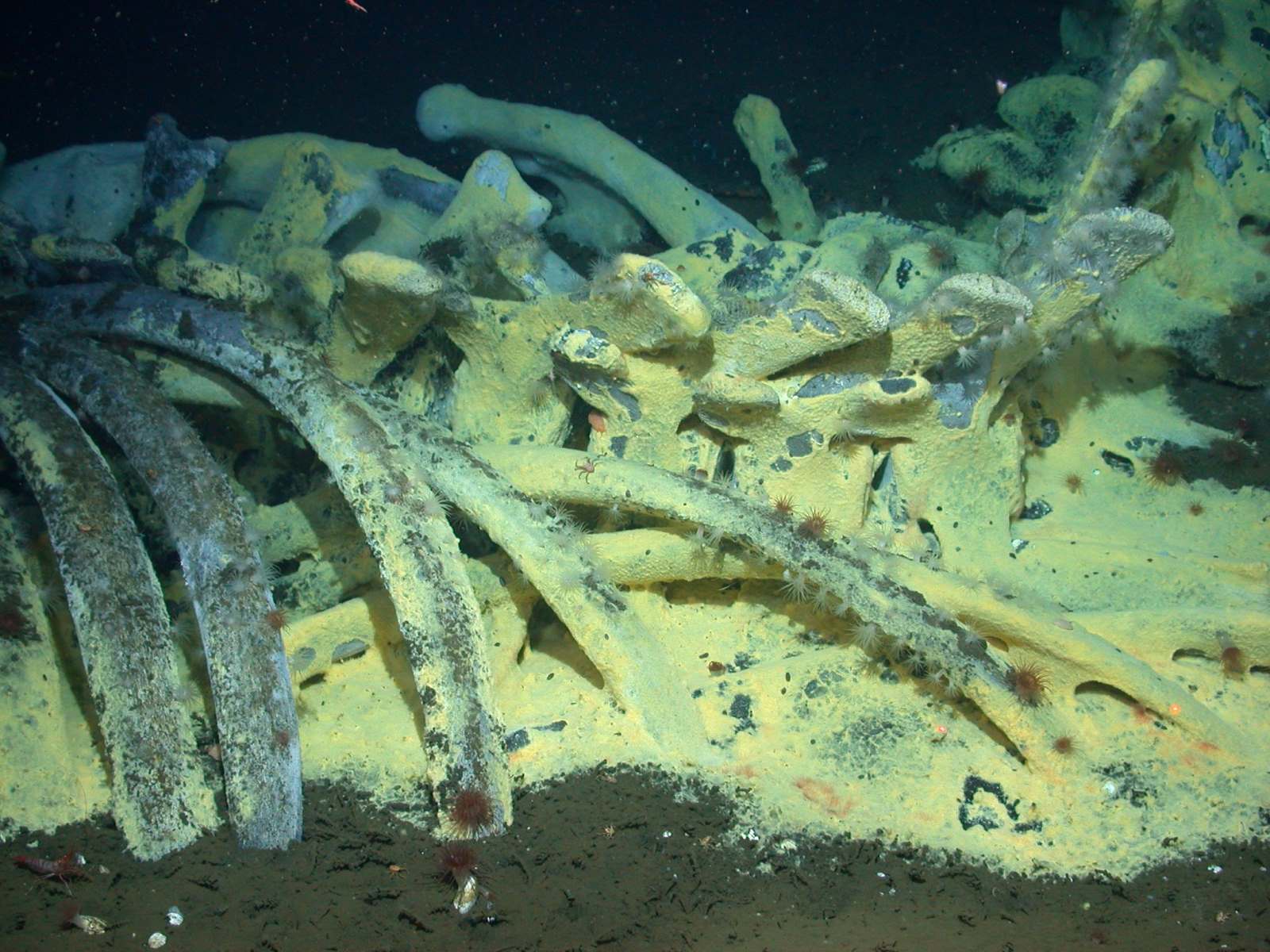Whale Fall Mysteries Off The Continental Shelf

Have you ever wondered what happens to a whale after it dies? When a whale's massive body sinks to the ocean floor, it creates a unique ecosystem called a whale fall. This phenomenon occurs off the continental shelf, where the ocean is deep and dark. As the whale's body decomposes, it provides food and habitat for a variety of marine life. From scavengers like sharks and hagfish to tiny bacteria, many creatures benefit from this underwater feast. Over time, the whale's bones become home to even more species, creating a thriving community in the deep sea. Curious about how this process unfolds and what creatures you might find? Let's dive into the mysteries of whale falls.
What is a Whale Fall?
When a whale dies, its massive body sinks to the ocean floor, creating a unique ecosystem known as a whale fall. This phenomenon provides a feast for deep-sea creatures and can support life for decades. Let's dive into some of the most intriguing whale fall sites off the continental shelf.
Famous Whale Fall Sites
These underwater graveyards are teeming with life, each offering a glimpse into the mysteries of the deep sea.
Monterey Canyon, California
- Located off the coast of California, Monterey Canyon is one of the deepest submarine canyons in the world. A whale fall here attracts a variety of scavengers, from hagfish to giant isopods.
Svalbard, Arctic Ocean
- In the icy waters of the Arctic, a whale fall near Svalbard provides a rare opportunity to study how extreme cold affects decomposition and marine life.
Porcupine Abyssal Plain, North Atlantic
- This site, located in the North Atlantic, is known for its rich biodiversity. A whale fall here supports a complex community of organisms, including deep-sea worms and crabs.
Unique Creatures Found at Whale Falls
Whale falls attract a fascinating array of deep-sea creatures, many of which are rarely seen elsewhere.
Zombie Worms (Osedax)
- These bone-eating worms are a common sight at whale falls. They bore into the bones to extract nutrients, playing a crucial role in the decomposition process.
Giant Isopods
- Resembling oversized pill bugs, giant isopods feast on the soft tissues of the whale, helping to break down the carcass.
Hagfish
- Known for their slime-producing abilities, hagfish are among the first scavengers to arrive at a whale fall, consuming the flesh and leaving behind clean bones.
The Impact of Whale Falls on Marine Ecosystems
Whale falls play a vital role in deep-sea ecosystems, providing a sudden influx of nutrients that can sustain life for years.
Nutrient Cycling
- The decomposition of a whale carcass releases nutrients into the surrounding water, supporting a diverse range of marine life.
Habitat Creation
- The bones and remaining tissues create a habitat for various organisms, from bacteria to larger scavengers, fostering a unique ecosystem.
Scientific Research
- Studying whale falls helps scientists understand deep-sea ecology, decomposition processes, and the adaptations of deep-sea organisms.
Challenges in Studying Whale Falls
Despite their importance, whale falls are difficult to study due to their remote locations and the depths at which they occur.
Technological Limitations
- Exploring whale falls requires advanced technology, such as remotely operated vehicles (ROVs) and deep-sea submersibles, which can be expensive and difficult to deploy.
Limited Accessibility
- The vastness of the ocean and the unpredictable nature of whale falls make them challenging to locate and study in detail.
Environmental Impact
- Human activities, such as deep-sea mining and fishing, can disturb whale fall sites, potentially affecting the delicate ecosystems they support.
The Fascinating World of Whale Falls
Whale falls create unique ecosystems on the ocean floor. When a whale dies and its body sinks, it becomes a feast for deep-sea creatures. These events support a wide range of marine life, from scavengers to bacteria. Over time, the whale's bones provide nutrients that sustain life for decades.
Scientists study whale falls to understand deep-sea biodiversity. These natural occurrences offer insights into how life can thrive in extreme environments. They also help researchers learn about nutrient cycles in the ocean.
Whale falls remind us of the ocean's complexity and the interconnectedness of marine life. They show how even in death, whales play a crucial role in their ecosystem. Exploring these underwater mysteries can lead to new discoveries about our planet's last frontier.

